After having started this ambitious project last week, we've already arrived at the top 10. The games you're about to see have all made a significant impact on my 'gaming career' or however you call that large chunk of your life you spend sitting behind a TV or PC screen playing video games. Although I would like to stress once more that these games are my favourites, and not per sé the best ones I've ever played, I truly think they are solid games from an objective point of view (for as far objectivity exists within this context). 10. The Legend of Zelda: Twilight Princess (GC, 2006) The first game in my top 10 is probably the most controversial one as well. When taking into consideration the limitation I chose to work with (listing only one game per series), you can imagine it wasn't easy picking only one Zelda game, having to choose between great games such as Ocarina of Time, Majora's Mask, and Twilight Princess, not to mention the old NES and SNES games. I didn't like Wind Waker that much myself, but it was still a solid game in its own right. In the end, I decided to go with Twilight Princess (the Gamecube version), seeing as its incarnation of Hyrule is the one I like most, and the game includes many of my favourite moments, dungeons and places in the series. In the end, it didn't change much to the standard set by A Link to the Past and Ocarina of Time, but its solid execution of nearly every concept that makes Zelda what it is (puzzles, combat, exploration) leads me to no other option than going for Twilight Princess as my favourite Zelda game, which automatically results in a high spot on my list. 9. Super Smash Bros. Brawl (Wii, 2008 ) Developed by: Super Smash Bros. Brawl is a potentially controversial choice as well, seeing as the floaty gameplay doesn't make it popular among the more hardcore fighting fans. But when I take a look at which game in the series entertained me most, I have to go with Brawl. It ironed out some of the quirks from Melee, while adding a huge amount of new content, features and gameplay modes. I thought it was impossible to go beyond Melee in terms of content, but Brawl proved me wrong. Granted, it's not perfect as not all of the new modes and features are executed all that well: the level editor was a disappointment and online was terribly unstable and limited. Even with those things dragging it down a bit, Brawl is a game that offered me many, many hours of pure fun, both alone and with other people I played either locally or online. 8. Conker: Live & Reloaded (Xbox, 2005) Like with previous games, the inclusion of Conker: Live & Reloaded also led to the omission of another great game, namely Conker's Bad Fur Day. Still, it wasn't a hard decision to make, because for me as a Conker fan, Live & Reloaded had pretty much everything I wanted from a new installment. The single player game was a remake of that of Bad Fur Day, and it dealt with literally all of the gameplay issues that made certain sequences in the original game more frustrating than they should. To add to this, the game probably had the best graphics to be seen on the Xbox. The only downside was that they censored some of the language, but it was a minor complaint in comparison to all the improvements the remake had to offer. More importantly, however, Live & Reloaded came with a new multiplayer component that was nothing short of amazing. While the ****based system wasn't as balanced as it should have been, it offered some of the best third person shooting action I've ever experienced, aided by tight controls, great character design and some very interesting levels and weapons. 7. Oddworld: Stranger's Wrath (Xbox, 2005) Developed by: Oddworld: Stranger's Wrath can hardly be discussed without stressing how underappreciated i t was and is. To me, this game is the single best ****c Xbox game out there, or my favourite one at least. It provided an excellent mix of highly entertaining FPS gameplay and solid platforming sequences. I cannot think of any flaws or shortcomings of this game, except perhaps some less interesting sequences near the end of the game. But still, this was one of the first FPS games to attempt incorporating a sandbox structure, making it all the more impressive that this game did nearly everything right. What makes Oddworld truly stand apart for me, though, is its rich universe. The setting is as beautiful and varied as game environments go, and every aspect of this game, from the characters right down to the weaponry itself, just breathes so much personality that it's impossible not to love this game. Therefore I honour Oddworld: Stranger's Wrath with a respectable 7th place in my list. 6. Mario Kart Wii (Wii, 2008 ) While the Mario Kart series has always been a personal favourite, none of the games, apart from maybe Mario Kart DS, pushed the series to its full potential in my opinion. Looking back, Mario Kart 64 was a deeply flawed though fun racing game with some of the most horrid AI in racing game existence. Double Dash, which was released for the Gamecube in 2003, did a better job, but still lacked severely in terms of single player content. Mario Kart Wii, however, was the first game in the series to really amaze me in every aspect. It had track select which, believe it or not, lacked in the previous console Mario Kart installments. It also had more tracks, more characters, more karts, and they even threw a fair share of bikes into the mix. The online play was probably the best on the Wii at the time of release, all the while the always brilliant local multiplayer was left in tact and even improved. All of this (and the fact that I rock at this game) allowed me to have about 450 hours worth of fun with this game, making it my most-played Wii game to date, and one of my favourite games of all time. HAL Laboratory and various other companies
HAL Laboratory and various other companies Oddworld Inhabitants
Oddworld Inhabitants
DraugenCP Blog
My Top 25 Favourite Games of All Time, #15-11
by DraugenCP on Comments
We've almost arrived at the Top 10 of my 25 Favourite Games of All Time list, but before we go there, first we have to go through the numbers 15-11 of my list. I think you'll agree the greatness of the games you're about to see is nearly undeniable. Enjoy. 15. Half-Life 2 (PC, 2004) Even the most avid gamers occasionally miss out great titles. I bet all of you have heard such guilt-invoking remarks as "What?! Are you telling me you've never played this game?!" One of the must-play titles I initially missed out on was Half-Life 2 from 2004. Recently, however, my brother gave me this game through Steam, and I could finally see what I missed out on: one of the most imaginative, ambitious games of the past decade. While the simple gunplay makes the action feel outdated and tedious at times, Half-Life 2 offers so much content without making concessions in terms of depth: cool puzzles, awesome, revolutionary physics, a nearly unseen before variety in terms of locale and smart linear level design that doesn't feel restrictive for a change. In addition to all this, Half-Life 2 is still a great-looking game, and great-sounding as well for the most part (the music can be a bit cheesy at times). I feel guilty for not playing this earlier, but luckily Half-Life 2 has aged phenomenally well, because even 6 years after its release I was impressed by both its gameplay and presentation. 14. Super Mario Galaxy 2 (Wii, 2010) Developed by: I believe this title needs little introduction or justification. Being released only a few months ago, Super Mario Galaxy 2 is the most recent title on my list, but that doesn't keep me from already considering it a ****c. Qualitatively, this might be the very best title on my list, as it does nearly everything right: it pushes the Wii to its maximum potential while offering some of the most innovative, polished and downright fantastic gameplay in any game to date. One could say it's nearly perfect, with the very occasional camera hiccup and the less interesting Green Stars being the only things that drag it down. It isn't higher up my list because I attach an unusual amount of value to atmosphere and character in games (see #16 on my list, for example), and in this aspect, I personally found Super Mario Galaxy 2 to be a little too abstract and gameplay-focussed at times. I wouldn't go as far as calling the game soulless like some people do, but I do see how one could identify such sentiments with this game. Still, this is one of the very best games of all time, and testifies of Nintendo's genius like no other. 13. Perfect Dark (N64, 1999) Some people say multiplayer FPS on consoles started with Halo. Those people are wrong. While it really got started with Goldeneye in 1997, its spiritual successor Perfect Dark came much closer to a multiplayer experience that closely resembles the online shooting that obsesses everyone and their dog these days. With bot support, tons of weapons, characters, options, levels, and overall great design, Perfect Dark might have been the single best multiplayer game available for the Nintendo 64. And with competitors such as Mario Kart 64, Diddy Kong Racing, Conker's Bad Fur Day and indeed Goldeneye, that says a lot. In addition to its broad multiplayer, Perfect Dark also pushed the Nintendo 64 to its limits with some amazing graphics and a lot of voice acting (which was relatively rare in those days due to technology restrictions caused by the cartridge). But apart from being a technical marvel, Perfect Dark is also a fountain of memories for me. I spent years playing this game with my cousin and basically anyone who wanted to join in. 'Perfect Darking' was our only activity for many a summer. While it suffered the same fate as many N64 games by not aging ideally, the many years of fun I derived from this title make it impossible to omit from a list such as this. 12. F-Zero GX (GC, 2003) Before the Super Mario Galaxy games came out, I considered F-Zero GX to be the game to come closest to the seemingly unreachable state of perfection. I could literally not think of anything this game lacked apart from maybe a track editor. It offered brilliantly designed tracks, some of the fastest gameplay in a racing title ever, tons of challenge, a plethora of unlockables, great music and graphics, heaps of different modes and difficulty settings, and the same cheese-tastic yet loveable characters from F-Zero X (and even a few new faces). It was and still is terribly fun, although it can potentially be frustrating seeing as this game isn't for sissies. While stories about its difficulty are overblown (it's hard, but not unmanageably so), it was one of those games that wasn't afraid to kick our behinds from time to time. Luckily, all of its difficulty comes down to controlling your own vehicle, and did not try to make you bite the dust by annoying you with cheap AI or item overdose. 11. Grand Theft Auto: San Andreas (Xbox, 2005) It was very difficult for me to select only one Grand Theft Auto title for this list. I love every installment in its own way (even the old 2D games), but for this uncompromising list a choice had been made, and when I had to choose the GTA game I had the most fun with, the answer was inevitable: San Andreas. It may not be the best game in the series, as its quality is questionable in a lot of ways: many new gameplay implementations were poorly executed, it was behind the times technically (poor graphics and abysmal draw distance and AI) and it had some overall poor design choices (I'm looking at you, turf wars). But damn, was it fun. The map was huge, and even though a lot of it was essentially useless scenery, it never got boring to explore it, pulling off the most crazy stunts as you go. The missions were some of the most fun in the game as well, and even if the story got a bit random near the end, it was still an enjoyable ride. I think I put well over 300 hours of gameplay in the Xbox version alone, and I also got to play it sporadically on the PC and the PS2. Whenever I get another ****c Xbox (my current one is broken), this game will be played a lot again. __________________________________ That's it for today. I hope to post the next portion in a few days, and I aim to have my list concluded by the end of this week. Nintendo EAD Tokyo
Nintendo EAD Tokyo
My Top 25 Favourite Games of All Time, #20-16
by DraugenCP on Comments
I was quite satisfied about how the first 'installment' of my Top 25 Favourite Games of All Time blog series went, in terms of how the writing went as well as the feedback. So I definitely hope you'll stick around for the remainder of my little 'project'. Meanwhile, enjoy reading about the next 5 games. 20. Banjo-Tooie (N64, 2000) While Rare's 1998 3D platformer Banjo-Kazooie was in some ways a Super Mario 64 rip-off, it was a damn good one. Its sequel Banjo-Tooie went far beyond the boundaries of Super Mario 64, though, offering enormous levels, the ability to play as different characters, and plethora of new moves and power-ups. It even contained FPS sequences, of course presented in the typical Banjo fashion. It was essentially a 'collectathon' type of platformer, seeing as the entire game revolved around collecting jiggies (comparable to Super Mario's stars) and various other objects. But the amount of freedom the player was given in exploring the 9 gigantic levels was so remarkable that Banjo-Tooie is probably the best evidence of how early 3D platformers were actually the precursors of games such as Grand Theft Auto and Just Cause. It really was sandbox gaming avant la lettre. I'd been anticipating this game for about 2 years and I ended up having fun with it for years, which is why Banjo-Tooie absolutely deserves a spot on my list. 19. F.E.A.R. (PC, 2005) Developed by: F.E.A.R. was one of the key games in the birth of the modern first person shooter. Monolith's new IP was perhaps most known for the horror presentation which confronted us with our deepest fears (darkness and little girls), but shooter fanatics will always remember it for revolutionising artificial intelligence in shooters. The game was a corridor crawler, and the conservative environments and linear level design apparently allowed Monolith to go all the way with the AI. They adapted to each situation perfectly, used teamwork to hunt you down, and basically give the player a run for his money intelligence-wise during every combat sequence. I unfortunately only got to try this game a few months ago, but the fact that it still managed to amaze me with its revolutionary AI testifies of its greatness. The endless office building environments eventually do get boring, and the story is only interesting the first time around, but the game is still fun to replay from time to time. The shooting never gets boring due to no battle ever being quite the same. 18. Battlefield 1942 (PC, 2002) Out of all the World War 2-era shooters, Battlefield 1942 is the only one that still interests me. The game only had multiplayer (with bot support), and had the Allied and Axis forces fight against eachother on about 20 different maps that ranged from Stalingrad to El Alamein and from Berlin to Iwo Jima. The objective of each map was basically to conquer all the points, or to keep fighting until one team ran out of reinforcements. How this went was vastly different on each map, because each one was different from the other. All they had in common was that they were all brilliantly designed. To this day there's still nothing for me that comes quite close to Battlefield 1942 when it comes to WW2-based shooter violence, and I still play it occasionally. 17. Diddy Kong Racing (N64, 1997) With the 6.6 it got at Gamespot, Diddy Kong Racing still stands as the most criminally underrated game on this website. Until recently, this was the very best kart racing game out there, as it was one of the only ones to improve Mario Kart itself without copying it. The driving and indeed the entire game mechanics were vastly different from the Mario Kart formula, and it was also the first kart racing game to include an adventure mode (which was later copied by Crash Team Racing). Add to this the ability to race in hovercraft and airplanes, as well as gameplay that relied more on skill than on luck, and it's obvious that Diddy Kong Racing was the true number 1 in the N64/PS era, and not Mario Kart 64 or Crash Team Racing. For me personally, this game was almost an obsession. I played it zealously from its release in 1997 to the end of the N64 era in 2001, and I still pop it in occasionally to relive the good old times. 16. Rampage: Total Destruction (Wii, 2006) I can hear you thinking 'What?!' If you've heard of this game (and it wouldn't surprise me if you haven't), you'll probably be aware of the bad reviews this game got. Especially the Wii version was poorly received, averaging below 50% at Gamerankings. So what makes this game appear on this list? I'll begin by explaining how this game got to my attention: in the nineties, I was a kid and thus didn't have a lot of money, so I often had to buy cheap games to be able to play something new without having to save money for 6 months. And so it was that I got to play Rampage. Even though the game was rather poor, the concept of destroying cities playing as oversized monsters is very appealing to just about any boy. Over the years, the Rampage games became like that cheesy horror movie you just love to watch over and over again, even if you are well aware of its obvious flaws. And so I found out about a new Rampage game appearing after about 5 years (not counting the puzzle spin-off). When I got a Wii, it was actually the first game I bought with it. After I got used to the controls, which aren't nearly as bad as reviewers made it out to be, I realised this was exactly what I wanted from a new Rampage game. It had 3D graphics (bad ones, but still 3D), 40 different monsters, power-ups, awesome cheap humor, and incredibly addicting gameplay. Rampage: Total Destruction is repetitive as hell, but I got enormous amounts of fun from unlocking the 5 power-ups of each monster (that's 200 in total, mind) and getting increasingly sick highscores. Rampage: Total Destruction was actually fine if you looked at it as a simple arcade game rather than an engaging storytelling console game. Not to say that it wasn't incredibly flawed in places: the graphics were plain bad, the sound was as repetitive as the core gameplay, and there were some control issues, but seeing as I probably put over a 100 hours into this game, it must've been doing something right. As a result, I have no choice but to thank this game with spot #16 on my list, even if it may seem hilarious to some of you. :) _______________________________ That's it for now, thanks for following. The next 5 games might take a while as I'll be away for the weekend, and college starts again next week. This semester won't be very busy, though, so I'm hoping to write more next week. Monolith Studios
Monolith Studios
My Top 25 Favourite Games of All Time, #25-21
by DraugenCP on Comments
Sooner than expected, here is my Top 25 Games of All Time list. Well, the first (or rather, last) 5 games of it anyway. I've chosen to list only one game per franchise, unless if those games are generations apart. For example, Super Mario Bros. 3 and Super Mario Galaxy could be on the list (not saying they necessarily are), but not Super Mario Galaxy 1 & 2. Games with that type of direct sequels are likely to be similar in quality, which would make for a pretty boring list, possibly only listing all the installments from a few of my favourite franchises. But don't worry, I've naturally found 25 games I truly love, even with this limitation.
Here's how it works: every post I will list 5 games on the list in descending order, so I'll start at 25 and work my way down to 1. All of these games are listed according to how much I like them. This doesn't necessarily have anything to do with the actual quality of the game (although the two are of course related), as you will see that some of the entries on my list have actually received pretty poor reviews. One of them even got a 5 and I can understand why. So this list is totally subjective and representative only for my personal opinion as of this moment. Maybe I'll look back at this list in a year and completely disagree with it, or better yet, I'll probably have played more great games that'd deserve a spot in this list.
Until then, I'll just list these fine games. First comes the rank, the title, the platform I've played it on, and the year of release. Then follows a picture of the box art, and I've decided to give props to the developers of these great games by listing them, as well as displaying a flag next to their name to indicate where they're from. It might be fun to see how many European, American, and Japanese games are listed. Naturally, I'll add a description to each game explaining why I like it. So get ready to enjoy numbers 25-21 from my list, and I'll hope you'll stick around until the end. I'll try to post a set of 5 games every few days or so.
25. Metro 2033 (PC, 2010)
Metro 2033 is a postapocalyptic first person shooter that takes place in the Moscow subway after a worldwide nuclear disaster. This game, made in the Ukraine, can best be described as a mixture of Doom and STALKER. The linear, intense gameplay has you shoot your way through mutants, demons, and hostile humans. The artistic design is very solid, and the graphics are some of the very best yet. More importantly, the game is just very atmospheric and immersive, making for one of the most convincing gaming experiences of the past few years.
24. Animal Crossing: City Folk (Wii, 2008 )
There's these games that may not be particularly good, involving, intense or action-packed, but still offer a tremendous amount of fun. Animal Crossing: City Folk for Nintendo Wii belongs to this category. It's basically a dumbed down version of The Sims which lets you collect stuff, buy clothes, decorate your home, farm, interact with fellow villagers in numerous ways, fish, etc. It sounds a bit stupid in concept, but over the years it has proven to be the ultimate relaxation game for me. It's always good to come back to my Animal Crossing town after beating some intense action game. People say it has improved very little over its predecessors on the Gamecube and DS, but with this being my first Animal Crossing game, I wouldn't really know. What I do know is that I've invested about 150 hours into this game, and I do not regret a single one of them.
23. Age of Empires III (PC, 2007)
Developed by:  Ensemble Studios
Ensemble Studios
I'll admit it right away. I'm a strategy noob. The first real strategy game I've played was Civilization IV, and I was indescribibly bad at it. Then I tried Age of Empires III, which is more about the combat, and I loved it. This game is particularly interesting to me because its focus is on the 16th/17th century, or more concretely put, the discovery age. Not only is this a period I've studied a lot in courses on Spanish culture and history, but the setting also translates itself into beautiful maps set in the New World. This is one of the few games I play on the easy setting because it allows me to take my time to build up a massive army, to grab some food without pausing the game, and to just look at the scenery while I enjoy the melancholic piano soundtrack. Being another relaxation game, Age of Empires III is a title I always see myself returning to.
22. Star Fox Adventures (GC, 2002)
While Star Fox Adventures originally wasn't even supposed to be a Star Fox game (it was a new IP by Rare called Dinosaur Planet), it is still my favourite game in the series. Gameplay-wise, it has more to do with Zelda than Star Fox, but the beautiful environments, the weird characters, the smooth gameplay, and some good voice acting made this game unforgettable to me. I've beaten its 15-hour adventure twice, and I will come back for more one day. Curiously, it is one of the best-looking Gamecube games despite being one of the first titles for the console. Rare's graphic artists sure were amazing.
21. Need For Speed: Hot Pursuit 2 (GC, 2002)
Hot Pursuit 2 was, for me, the last great game in the Need For Speed series. It embodied what I identified the series with ever since I first played Need For Speed 2 on the PC: racing exotic sports cars through beautiful landscapes. Too bad for me, Need For Speed Underground, the next game in the series, had you race ugly tuned cars through a city that looked like a giant disco. But there was more to Hot Pursuit 2 than just some IP conservatism on my behalf: it had many interesting modes, including the very challenging 'Be a Cop' mode, and it had some of the finest tracks in all of the series. Tropical Sunset, for example, is a track I must've raced on over 50 times. It also had a great soundtrack with kind of melancholic rock music and some techno tracks. All in all, it was a terrific racing game, but going back to it now also makes me sad when I think of how much the series has fallen since, although the remake of Need for Speed Hot Pursuit they're making gives me hope.
_________________________________________
That's it for now, see you soon for the next portion!
I'm gonna regret this
by DraugenCP on Comments
But I'm gonna try and do something I've never really been able to do before: to make a top 25 of my favourite games of all time. I've played so many great games that filling this list won't be a problem. Ranking them properly will probably turn out to be harder than Ninja Gaiden, though. I don't know if I can pull this off at all, but in advance I'd like to stress 2 things. First of all, this will be a completely subjective list of my FAVOURITE games. My list will not necessarily represent which games I think are BEST. I'll just rank them according to how much fun I had with them and how highly I think of them. By any means, stay tuned.
Oh, and another bold announcement: now that I have a decently working microphone, I might try and record a video of some sorts. Until then, I'll start working on my accent. :D
More new reviews
by DraugenCP on Comments
So I've written and submitted a few more reviews. This time around, the lucky games are Crysis, Crysis Warhead, and Grand Theft Auto IV. Looking at my recently submitted reviews, I notice I've given out a lot of high grades lately. I hope that doesn't make me look like someone who gives out 8+ scores to every halfway decent game, as I can guarantee you that I only give such grades to games that I think totally deserve it. I just seem to have played a lot of amazing games lately, and that's a trendI'm hoping to continue.
I've already written quite a lot of reviews for one month, but I'm looking to submit maybe 1 or 2 more before the start of September. I really want to do some Wii reviews again, as lately I have near exclusively written about first person shooters for the PC.
Ignorance really is bliss
by DraugenCP on Comments
You know how, when you haven't played a game in years, that game will continue to look awesome in your memories? It's as if our memory installs graphical updates to keep games we played in the past looking 'next-gen'. I already made that mistake once when I played the original Carmageddon (1997) for the first time in years, somewhere in the Gamecube era. In my subconciousness, the images I recalled of this game were elevated to the point that I expected them to look on par with the latest Need For Speed games. Yet when I started playing it again, it was an awful mess visually that was hard to swallow. It happened on a few other occasions, but in all cases they were games from other eras I hadn't touched in years. What I didn't know, however, is that the same effect could take place within a matter of months. When I first started playing the Wii-exclusive FPS The Conduit at the start of this year, I didn't think it was great-looking, but it looked decent, and I was genuinely impressed by the high amount of detail on the character models.
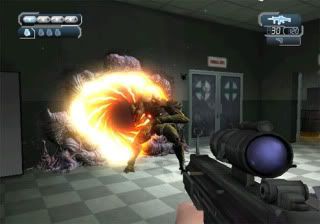
About 3 months ago I got a gaming PC, and because I wanted to explore that new medium fully, I stopped playing my Wii temporarily to be able to give full attention to the PC and its huge gaming library. I played great-looking games such as Metro 2033 and Crysis on very high settings, so I got my fair share of eye candy as well. But when I returned to the Wii and started playing The Conduit again a few days ago, I got a real scare. The blurriness, the jaggies, even the unclear character models: every visual aspect of The Conduit seemed to have been downgraded, but it was the same game I enjoyed and beat twice. I even noticed how simplistic the AI was after my experience with PC shooters.
Granted, after a few levels I somehow adjusted myself to not be annoyed by the graphics, and I even noticed how the game looks a lot better in small areas and hallways, but it's weird how the mind can be so deceiving in a matter of months. Shows you how much witness statements are worth in police investigations...
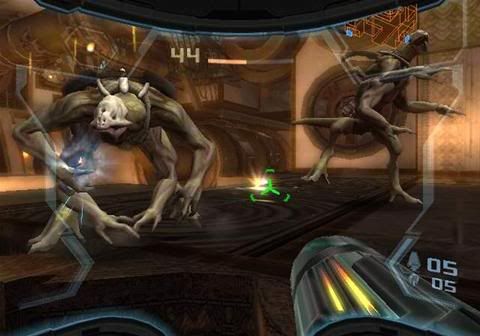
Oddly enough, Metroid Prime 3. Fortunately, because I wouldn't want one of my favourite gaming experiences of this generation being ruined because I was spoiled by PC graphics.
I'm still having fun playing The Conduit, by the way. :)
Music review
by DraugenCP on Comments
And now for something completely different. The following article is a review I did on an album by the French black metal band Peste Noire. Posted here because it came in handy with a music discussion I'm having with julianozuca. Read if interested, although I must warn you that it may strike you as a bit pretentious. I was taking philosophy classes, and they tend to do weird things to your brain, hehe.
_______________________________________
Peste Noire - La Sanie des siècles - Panégyrique de la dégénérescence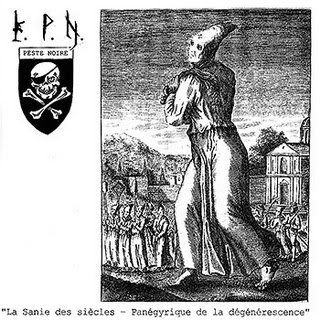
About the art in music and why La Sanie des siècles is the epitome of guitar-based black metal
It is often forgotten that music belongs to the domain of art. In this context, I do not refer to the ****cal music that is traditionally identified with culture and art elitists. Instead, I refer to 'pop' music, or rather modern music, as nowadays the connotation that comes with 'pop' brings back nightmare images of such horrors as N*Sync and Britney Spears.
It's no surprise that in the minds of many people modern music is more closely identified with the mass culture represented by McDonald's' golden arches and the fake smile of Oprah Winfrey and the likes. After all, the commercial side of modern music is more easily accessible with channels such as MTV and The Box. When also taking into account most music used in commercials, movies, and videogames, we could state that the commercial side of modern music is so ubiquitous in our everyday lives that it completely overshadows the other side of modern music, vaguely defined as 'the underground'. Here, artistic expressions are far more likely to appear in the form of innovative, unconventional composing and unique musicianship. This side, the 'art' side of modern music, is not always easily accessible. The sound of a certain innovative band, or even an entire genre, may differ so greatly from anything we're familiar with that it takes a long while to get used to, or the releases of said band may be so obscure that one will have to resort to mail order websites rather than simply walking into a local record store.
These two features can easily be applied to the back metal genre. Starting out as a ****that was to be the most extreme form of metal music, black metal evolved into a very pluriform musical entity over the years. Sometimes it's more of a centre in a network of extreme yet strangely spiritual music which are only similar in some basic features. People who compare Borknagar to Fleurety will realize that black metal is not to be captured within a strict definition with tight-set, dogmatic borders, although there will always be people who claim otherwise. Black metal also differs from 'normal' metal and hard rock music in its attitude: the sex, drugs & rock 'n' roll-attitude that almost automatically comes with such bands as Metallica and Motörhead starts to disappear once you enter the black metal underground, and is often completely substituted by a disgust for the modern world, and a longing for a return to ancient times.
Whilst keeping in mind that black metal is but a vague term, it's perhaps strange to claim that Peste Noire's debut album, La Sanie des siècles - Panégyrique de la dégénéresence ('The Sanies of the Centuries - Ode to Degeneration'), is black metal of the purest kind. Yet, at the same time, this album proves what was said earlier: for while paying obvious homage to the black metal tradition, with influences from bands such as Burzum being quite easily detectable, Peste Noire carries this tradition to a whole new level with tons of innovations. The very concept of black metal itself is being carried out to near perfection on this disc.
The album contains nothing out of the ordinary (except maybe an excessive use of guitar solos) in the sense that it has all been done before in one form of another, but most of it has never been done so well. Peste Noire, led by the band's singer and (lead) guitarist, who goes by the name of La sale Famine de Valfunde (or simply Famine), plays a very solid, guitar-based ****of black metal. The music is more melodic, however, than that description suggests due to the strong presence of acoustic guitars, the aforementioned use of guitar solos, and the varied songwriting. This concept is materialized greatly by the ****musicianship of Famine (guitars), Winterhalter (drums), and Indria (bass). Alcest and Amesoeurs mastermind Neige occasionally contributes to the collective in the form of guest vocals and organ playing.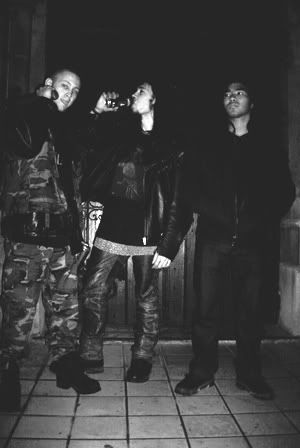
From left to right: Famine, Winterhalter, Indria.
Starting from the intro track, Nous sommes fanés (which is, as someone once mentioned, probably the most French song ever made), it's clear that Peste Noire takes us on a ride through sickness and depravity, which completely justifies the album's title. Musically clad in a medieval atmosphere, the lyrics are a mixture of old (and controversial) French poetry and Famine's own work. While one may expect there to be a considerable gap in quality between the borrowed literature and Famine's own efforts, the latter person doesn't fail to keep the level of the lyrics consistently high. This is remarkable, seeing as the ****c literature Famine used for his songs comes from such famous authors as Charles Baudelaire and Christine de Pisan. Famine didn't write or select the poetry at random: all of the lyrics essentially deal with some form of despair (though not in an angsty way), hopelessness, chaos, and indeed the entire concept of degeneration and decay. All of the lyrics, however, are in French, and those who don't understand a word of this language may not be able to uncover the treasure that is La Sanie des siècles in its entirity, seeing as the lyrical concept is so magnificently interwoven with the music. Moreover, with the music of every song reflecting the emotions of the lyrical content so well, it's debatable whether Peste Noire is paying homage to the ****c authors of his country, or if the ****c authors are paying homage to Peste Noire. A dubious statement by any standard, but I wouldn't say this if I wasn't totally convinced that Famine is one of the most talented and unique artists in the metal scene.
To illustrate the surprising consistency of the lyrical concept, despite the mix of ****c poetry and original work, I will shed a light on two fragments of this album's lyrics. The lyrics from the first song, Spleen, have been taken from a poem of the same name by Charles Baudelaire, while the lyrics from the second song, Des médecins malades et des saints séquestrés, have been written by Famine himself.
Spleen
"Et de longs corbillards, sans tambours ni musique,
Défilent lentement dans mon âme; l'Espoir,
Vaincu, pleure, et l'Angoisse atroce, despotique,
Sur mon crâne incliné plante son drapeau noir."
- "Spleen" by Charles Baudelaire in Les Fleurs du Mal, 1857.
("And long hearses, with no drums, no music,
File slowly through my soul: Hope,
Conquered, cries, and despotic atrocious Agony
Plants on my bent skull its flag of black."
- Translation by Geoffrey Wagner, 1974.)
Des médecins malades et des saints séquestrés
"Abois, pogroms, razzias! Assourdissant chaos!
Vocifèrent les serfs de l'haute Gestapo:
Les dandys de Satan aux lourds casques d'acier
Entassent dans les trains d'éternels vacanciers"
- "Des Médecins Malades et des Saints Séquestrés" by Famine, 2003.
("Terror, pogroms, razzias! Deafening chaos!
The serfs of the poncy Gestapo are swearing:
The dandies of Satan with heavy helmets of steel
being stapled upon the trains of eternal tourists")*
The mixture of sorrow and chaos that shines through in both fragments is easily noticeable, with the music both being extremely emotional and defying sanity itself with chaotic brutality. With that, La Sanie des siècles could be considered a concept album. Not because the songs tell different chapters of the same story (like on Dimmu Borgir's In Sorte Diaboli), but because all of the songs reflect a common idea, or 'concept'. The music is surprisingly consistent with this idea - surprising because early versions of many of the songs on this album previously appeared on different demos over a timespan of approximately 4 years.
Due to the unconventional song structures, harsh sound, and the depraved lyrical and musical content, this album is not likely to appeal to those who have never appreciated black metal, or are just plain unfamiliar with it. For those who know how to appreciate it, though, La Sanie des siècles is the pinnacle of extreme music. It perfectionizes concepts mostly shaped during the third wave of black metal, with Peste Noire not failing to add its own characteristic sound. Although the band draws heavy inspiration from the aforementioned Burzum and other contemporary black metal artists, Peste Noire once again out****s nearly everything they pay homage to.
All of that being said, La Sanie des siècles - Panégyrique de la dégénérescence is truly a work of art in the literal sense of the word. It testifies of the talent of the young Famine, who proves like no other that black metal is a form of (neo)romanticism: Famine is compatible with the aesthetics of the romantic artist, being both the genius and the outcast that were hailed during that era. The musical concept he constructed shows obvious signs of romanticism as well, with Famine attempting to describe (both musically and lyrically) the inexplicable beauty of things that may be beyond our control or comprehension, near impossible to capture in words, but therefore no less real, as within this romantic context, emotion is just as big a part of knowledge as ratio. In this sense it is unclear in what age the concept of Peste Noire is situated artistically: the themes and atmospheres obviously coincide with the Dark Ages, but are Peste Noire satanic minstrels telling us tales of degeneration, despair, and decay, or are they tortured romanticists speaking of long forgotten times because they are unsatisfied with the present? In any case, the use of modern instruments and techniques doesn't prevent us from occasionally being fooled into believing that this is truly music from a long-forgotten time. While this is not the case, it certainly is music from another world, metaphorically speaking. In conclusion, Peste Noire have created a pretty much flawless work of art that basically shouldn't be missed out on by any fan of (extreme) metal.
Line-up
La sale Famine de Valfunde - guitars and vocals; bass on track 5
Indria - bass
Winterhalter - drums and tambourin
Neige - vocals on track 7; organ; drums on track 1 & 8; bass on track 8
Tracklist:
1. Nous sommes fanés (2:18)
2. Le mort joyeux (4:40)
3. Laus Tibi Domine (6:57)
4. Spleen (5:48)
5. Phalènes et pestilence - salvatrice averse (11:46)
6. Retour de flamme (4:18)
7. Dueil angoisseus (7:02)
8. Des médecins malades et des saints séquestrés (9:09)
All music and lyrics written by Famine, except for track 2 & 4: lyrics by Charles Baudelaire; track 7: lyrics by Christine de Pisan.
*Translation may not be 100% accurate, seeing as some words don't have a proper equivalent in English.
Thanks to Reliability of 1337Planet.net for corrections.
S.T.A.L.K.E.R. 2 announced for 2012 - goes multiplat
by DraugenCP on Comments
A new S.T.A.L.K.E.R. game has been announced for release in 2012 today. It is supposed to be the start of a new trilogy and it will probably be ported to the consoles. Exciting news, but I hope they don't ruin a great series.
Top 5 First Person Shooters of this generation
by DraugenCP on Comments
This is an article I recently wrote in Dutch. I translated it into English so more people could read it. That includes you. If you think it's tl;dr, you can just look at the pictures. :P
____________________________________________________________________
The 5 best First Person Shooters of this generation
BOOM, HEADSHOT! Due to my recent obsession with first person shooters, the idea to compile a list of my 5 favourite games in this genre was not a particularly farfetched one. Naturally, it proved impossible to compare, for example, the original Doom to the latest installment in the Battlefield series, so I decided to limit myself to FPS games from this gaming generation. When this generation exactly started is up for debate, so I chose to draw the line at games from 2005 and after. This is why you will also find a ****c Xbox title on my list. I have also decided to name only one game per franchise in order to promote the variety on my list.
The term 'first person shooter' is not easy to define either. But as long as a game takes place from a first person perspective most of the time, and the gameplay revolves around shooting, it's an FPS in my book. A game such as Metroid Prime 3 would thus be excluded from that definition as it revolves around puzzling and exploring rather than shooting.
Finally, I must stress that I have near exclusively taken the single player experience in mind when rating and ranking these shooters seeing as multiplayer is not my cup of tea when it comes to shooting. Naturally, my opinion is based on games I have played. As such, it may occur that your favourite shooter is absent from my list merely because I have not yet given it a try. But above all, my list is subjective and not definitive at all.
And now, The List:
5. Metro 2033 (PC, X360 - 2010)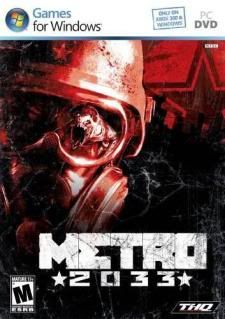
Developed by:  4A games
4A games
This recently released shooter, developed by the Ukrainian company 4A Games, confirms once again that Eastern Europeans are among the very best in the world when it comes to creating shooters with compelling single player campaigns. Based on the science fiction novel by Dmitry Glukhovsky, Metro 2033 tells the story of Artyom, a young Russian that had to take shelter in the subway system of Moscow along with 40,000 other refugees after a nuclear war swept across the world. In these subways, mutant attacks, faction warfare, hunger and poverty are daily problems every metro inhabitant will have to cope with.
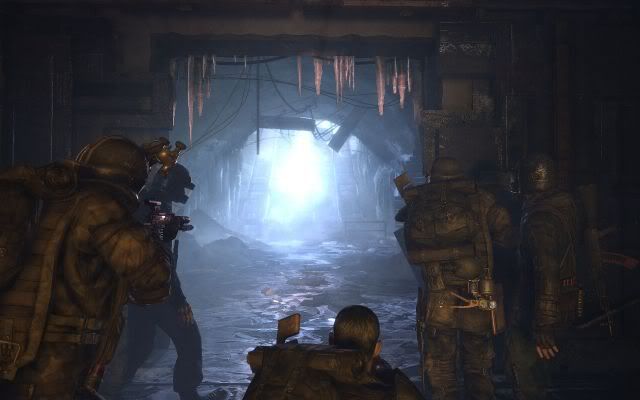
With this in mind, it's no coincidence that the game uses a lot of survival horror elements. Metro 2033 has obviously learned from games such as Doom 3, F.E.A.R. and S.T.A.L.K.E.R. You will often have explore the darkest, most dangerous outcorners of the subway system which isn't a very cheery place to begin with. A mixture of real life guns and fictional weaponry will have to be used to keep the game's many horrible mutants at a safe distance. Other enemies include bandits, and even the nazis and communists that wage a war against eachother just like in the old days.
While the gunplay is not very innovative, a lot of fun, new ideas manage to liven up the gameplay and set Metro 2033 apart from 'normal' shooters. A gas mask has to be worn at all times when exploring the surface. To add to that, the filter has to be replaced constantly to keep the fresh air supply running. The gasmask can even break during battle, so the player has to try and avoid melee encounters as much as possible.
But perhaps the most remarkable aspect of this game is its phenomenal presentation. The artistic design is very, very solid, and the graphics are among the best seen in a video game to date: you could say only Crysis tops this game in this area. Fortunately, the gameplay offers enough depth to not only make this game gorgeous, but a lot of fun as well. The campaign lasts for roughly 9 hours and never has a dull moment. In combination with a fantastic atmosphere, Metro 2033 ranks among the very best shooters of its era.
4. Oddworld: Stranger's Wrath (Xbox - 2005)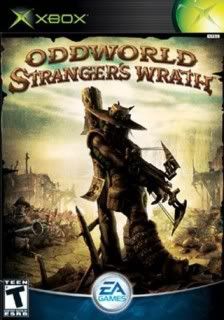
Developed by:  Oddworld Inhabitants
Oddworld Inhabitants
If there's one ****c Xbox game that never got the attention it deserved, it's Oddworld: Stranger's Wrath. In this latest Oddworld game, you play as Stranger, a bounty hunter that needs money for a mysterious operation. You gather the money by catching tons of wanted bad guys dead or alive. This is largely done from a first person perspective, armed with a crossbow that allows you to fire all kinds of bizarre ammunition. Spiders, for example, can be mounted on the crossbow to be fired at enemies, temporarily catching them in a web. Then there's the loudmouthed squirrels that can lure unsuspecting desperados to a location where it's easier to take them down.
This free play****made for a game that truly never got boring. Aided by an open world-like structure (even though old locations cannot be revisited after a certain point), it was possible to work your way down a list of open bounties in whichever order you pleased.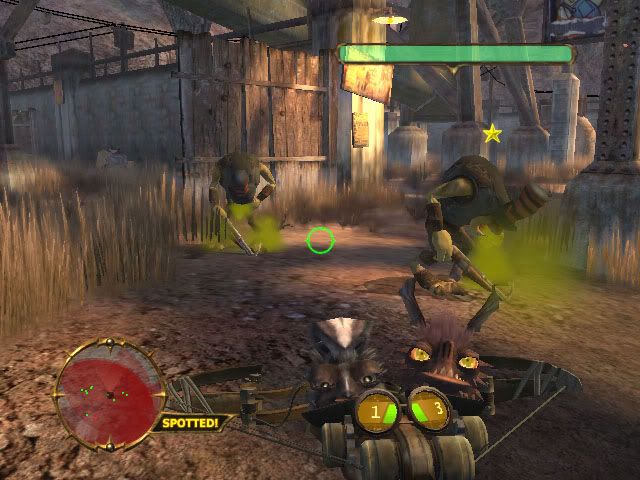 The most unique innovation this game had to offer, however, was the ability to switch to a third person perspective at any given time. While it was not recommendable in battle, it allowed the game to offer numerous platform sequences without generating the same frustration that was ever so present in most other FPS games that contained platforming, such as Turok.
The most unique innovation this game had to offer, however, was the ability to switch to a third person perspective at any given time. While it was not recommendable in battle, it allowed the game to offer numerous platform sequences without generating the same frustration that was ever so present in most other FPS games that contained platforming, such as Turok.
The combination of a marvellous, unique presentation, varied, free and addicting gamepay, an interesting story, and the solution to an age-old FPS problem earns Oddworld: Stranger's Wrath place 4 on my list.
3. F.E.A.R. (PC, X360, PS3 - 2005)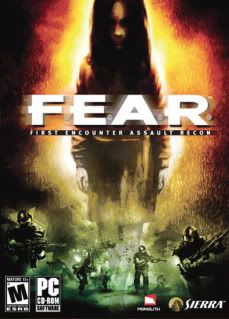
Developed by:  Monolith Productions
Monolith Productions
When the gentlemen of Valve proved to be the masters of the linear shooting genre by pushing first person shooters to new heights with Haf-Life 2, Monolith Productions did not stand idly by. The American developing studio, responsible for the legendary PC shooter Blood, took the initiative to revolutionise perhaps the most important aspect of first person shooters, and one of the few areas in which Half-Life 2 did not excell: gunplay.
The birth of the definitive next-gen FPS became reality with their subsequent masterpiece F.E.A.R., which saw the light of day in 2005. While the game's horroresque presentation obviously tried to appeal to the recent popularity of horror flicks such as The Ring, F.E.A.R. was first and foremost a pure, rock solid and revolutionary shooter. The smarter-than-ever AI offered the player a genuine challenge. With clever maneuvers, respectable teamwork and cunning tactical decisions, the artificial intelligence lived up to its name for the first time in years.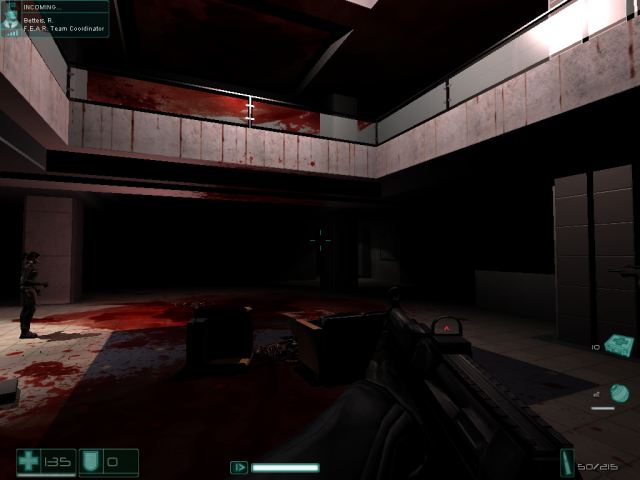 Perhaps the only real downside was the monotony of several aspects of the game. You basically fought the same enemies with the same guns in similar environments throughout the entire single player campaign. Not even the horror elements could prevent boredom from striking at occasions. But even then, the wonderful gunplay was reason enough to spend quite some - preferably nocturnal - hours on this game.
Perhaps the only real downside was the monotony of several aspects of the game. You basically fought the same enemies with the same guns in similar environments throughout the entire single player campaign. Not even the horror elements could prevent boredom from striking at occasions. But even then, the wonderful gunplay was reason enough to spend quite some - preferably nocturnal - hours on this game.
But F.E.A.R. was (and is) not just terribly fun to play: the importance of this game for the genre is considerable. The revolutionary AI made a whole bunch of shooters feel dated almost overnight, and even now there are very few shooters that surpass F.E.A.R. in this area. Even F.E.A.R. 2, the 2009 sequel, was unable to topple the tremendous success of its predecessor.
2. Crysis (PC - 2007)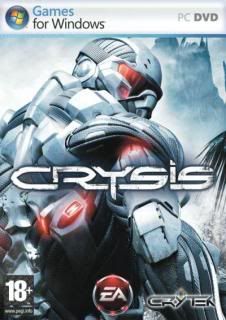
Developed by:  Crytek
Crytek
Say Crysis, and you say 'eye blinding graphics'. So eye blinding that, upon the game's release in 2007, the PC that could run it optimally still had to be invented. But once you were able to run this so-called 'system hog', it proved to be well worth the trouble. The best graphics of this generation met with incredibly balanced gameplay and innovative game design. While Crysis used the same clichéd concepts as games such as Halo for its presentation and story (tough space marines taking on communist baddies and evil aliens), it went so over-the-top with its technical marvels and dramatic sensationalism that it left the competition biting its bump-mapped dust.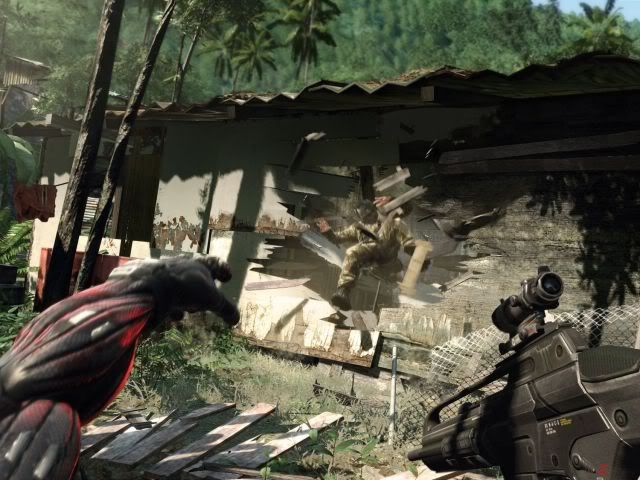
It is too disrespectful, however, to pass off Crysis as a more bombastic version of Halo. Even though its box art would likely fool you into thinking that you're dealing with yet another sci-fi arcade shooter, it still offers a very rich, very deep gameplay experience. While most of the special 'Nanosuit' functions (extra power, speed, armour) were largely irrelevant, the cloak function, and the way it is implemented in this game, was a true enlightment. By being able to turn invisible for a certain time, it was possible to evade guard posts in a Metal Gear Solid-like fashion and take out enemy patrols without even being spotted once. The sandbox-like level design (every level has a beginning and an end, how you get from one point to the other is completely up to you) certainly helped elevate this gameplay to near unreachable heights. At certain times, however, the sheer size of the maps would take some pace out of the gameplay, and the endless jungles would get a bit tiring. The spectacular finale, in which the enemy North-Koreans you fight in the first two thirds of the game make place for - much stronger - aliens, is even more impressive with this in mind.
Crysis is a bombastic, modern 'big budget' shooter, but with a lot more depth than we normally see when we have to engage in virtual combat with hostile aliens.
1. S.T.A.L.K.E.R.: Shadow of Chernobyl (PC - 2007)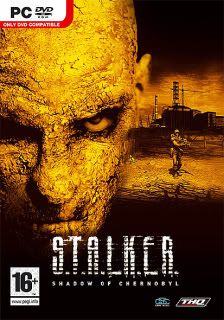
Developed by:  GSC Game World
GSC Game World
After years of broken promises and delays, 2007 marked the year in which we could finally get our hands on the magical S.T.A.L.K.E.R.: Shadow of Chernobyl. In a very unconventional, near rebellious fashion, the FPS genre was turned upsidedown and mixed with elements from genres such as RPG, survival horror, and open world sandbox gaming. The FPS elements themselves also ****fied as untraditional, to say the least. The realistic ballistics and incredibly clever AI gave arcade shooting fans a real scare, as the usual running and gunning proved to be an ineffective, suicidal way of playing this game. Especially in the beginning, when you are plagued by a permanent lack of ammunition, decent weapons and proper armour, it seemed near impossible to take down a squad of soldiers with superior equipment.
Everyone patient enough to master this game's defiant, unusual mechanics, however, would discover a truly unforgettable adventure. With a mysterious, compelling story, varied gameplay and the most atmospheric world in a video game to date, Shadow of Chernobyl stood out in nearly every area. Unfortunately, the game quickly became notorious for its many bugs and glitches, though those problems were quickly dealt with by numerous patches and what would turn out to be a dedicated and talented modding community.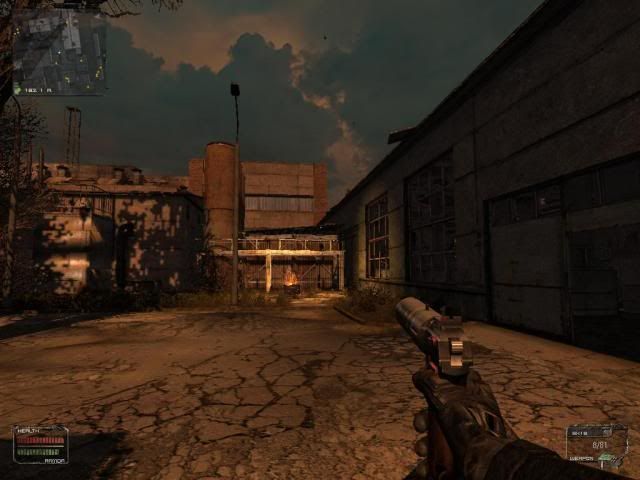
S.T.A.L.K.E.R. is important because it raised the bar for subsequent shooters in various areas. Shadow of Chernobyl was, for instance, one of the first games to successfully combine the FPS genre with an open world concept, avoiding the design flaws that ruined other games of this kind, such as Far Cry 2. Moreover, the uncompromising, challenging, non-scripted gameplay provided the increasingly linear, cinematic shooting genre with some much-needed fresh air. Shadow of Chernobyl was a renegade shooter in many aspects, as it did pretty much the exact opposite as big budget titles such as Call of Duty and Halo. The A-Life engine allowed computer-controlled players to behave remarkably natural, making S.T.A.L.K.E.R. very unpredictable, seeing as it didn't need to rely on endless series of scripted events.
The open world concept was implemented even better in the recently appeared sequel Call of Pripyat, but that game would have never existed without Shadow of Chernobyl, which is why you find the latter at number 1 on my list of best first person shooters of this generation.
























Log in to comment